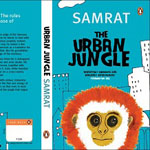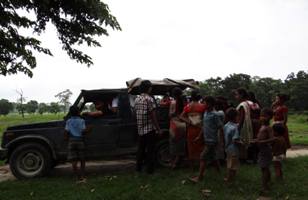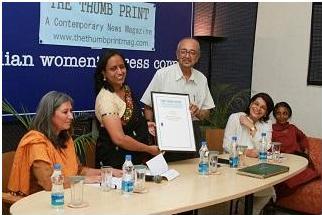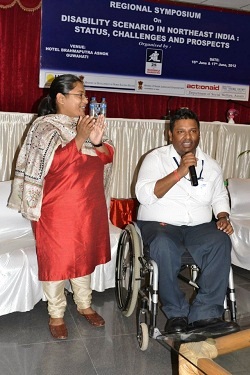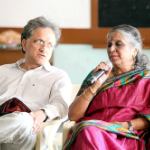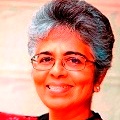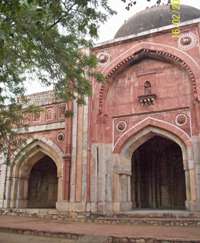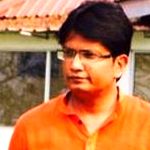Narendra Modi’s election as Prime Minister has caused trepidation in many quarters. His image is of a Hindu hardliner, and there are fears about what he will do. That image, however, has been carefully built up over a period of years by Mr Modi’s political opposition and a section of the media. It has been helped along by the more extreme among his supporters, who practically worship him. These two tendencies were clearly articulated during the 2014 election campaign by the two opposing slogans of “har har Modi” from his supporters and “dar dar Modi” from his opponents.
As is often the case, the truth lies somewhere in between. Mr Modi is neither god nor devil; such caricatures are only apt in Bollywood films. Reality is far more nuanced and complex.
Shades of the complexity can be found if we go back to the event that brought Mr Modi to international infamy and cemented his reputation as a Hindu extremist. That was the Gujarat riots of 2002, in which 790 Muslims and 254 Hindus were killed.
The incident was reported back then in all major newspapers, magazines and TV channels. The Times of India had reported on February 28, 2002, the day after the incident: “57 die in ghastly attack on train”. The strapline below the headline said, “Mob targets Ram sevaks returning from Ayodhya, riots in Godhra”. The story carried the byline of Sajid Shaikh, from Godhra. The Indian Express report by Rohit Bhan said, “58 killed in attack on train with kar sevaks”. The New York Times also reported the story. It said there was a mob attack on the train, which was set on fire.
The whole thing may have been a result of a series of unnecessary escalations and misunderstandings. It was reported back then how the whole thing started. There was an altercation between some of the kar sevaks and a chaiwalla at Godhra platform who happened to be Muslim. It quickly became a fight between two groups as more people joined in. Then a rumour went around that the rowdy kar sevaks had abducted a Muslim girl. This girl, Sofia Bano, was found, and even testified as a witness before the Nanavati-Shah commission of enquiry on request of the Jamiat-Ulema-I-Hind. She said one of the kar sevaks had indeed tried to grab her, but he had left her when she screamed, and she had run away and hidden.
It is possible that the train was stopped to rescue her. The kar sevaks, fearing attacks, locked the doors and windows. The mob had already thrown in burning rags doused in oil by then. They may not have expected anyone to die from it, since the train was stationary, and people could get out of the wagon. Unfortunately, there were many unreserved passengers and the coach was hugely overcrowded. The fire, which caused panic and confusion in that crowded space, appears to have spread rapidly. As a result, 59 people, mostly women, children and the elderly, were killed.
This occurred around 8 a.m. In the next few hours, the media landed at the spot. The horrific images were shown on many local TV channels. Sentiments became inflamed. The horrors of the rioting, in which the state police was credibly accused of complicity in certain places, followed. There were reports of VHP, Bajrang Dal and BJP leaders leading mobs.
Whether Mr Modi was personally culpable in those riots has been a matter of heated argument for 12 years now. The Supreme Court has cleared him of personal culpability, but the doubts have lingered.
It is likely that some doubts will persist. The exact details of what happened that day cannot be known beyond a point. People have already made up their minds about what they want to believe; facts will not change ossified opinions now, after so many years of exposure to propaganda. However, the facts as they were reported in those early moments before the politics started are still worth remembering.
It is also worth remembering that much more justice has been done for the victims of the Gujarat riots than for the victims of similar rioting in Assam. Some of the leaders of the Gujarat riots, including a minister, have been jailed.
While Gujarat has been the focus of global attention, Assam has been completely neglected. The Nellie massacre of 1983 saw between 2,000 and 3,000 Muslims killed. Till date, not a single person has gone to jail for it. In the years since, there have been many riots in Assam targeting religious and linguistic minorities. In recent years, the plight of Muslims in the Bodo areas of Assam has clearly been worse than the plight of Muslims in Gujarat. There has been scant attention given to it, and precious little justice for its victims. Assam and the Northeast do not have reason to be unduly alarmed by Mr Modi’s ascent. If anything, things are likely to get better for the region and its many communities. This may be expected partly due to political reasons.
The Nagaland People’s Front led by Neiphiu Rio and the National People’s Party of P.A. Sangma are part of the National Democratic Alliance, and these two leaders are tipped to win ministerial berths at the centre. The All India United Democratic Front led by Maulana Badruddin Ajmal has also pledged its conditional support to the Modi government. It will therefore not be in opposition, but be an ally. The BJP itself has won a large number of seats from Assam, and has the political mandate of influential sections of its population.
The emerging political alliances would indicate that the leaders understand what many on the ground still haven’t grasped: That the BJP does not represent a threat to any community. It is routinely described as "Hindu nationalist" by the foreign media, but is not out to create a Hindu nation. The party, and all its top leaders including Mr Modi, have repeatedly harped on the theme of “sabka saath, sabka vikas”, which means “with everyone, for development of all”. It is likely that they actually mean it.
Mr Modi himself has indicated which direction he wants to take in his speeches. He has spoken out very clearly in favour of further developing the region’s indigenous industries such as tea, creating infrastructure, curbing corruption, and enhancing educational facilities. At a political level, he has said he will follow former prime minister AB Vajpayee’s policies on the region. One of his first acts, even before taking oath, has been to informally ask the Home Ministry to look at restarting the Naga peace process.
He is also keen to solve the issue of illegal migration from Bangladesh. Now that his government is allying with the AIUDF, hopefully a deeper understanding of the problem will be possible, beyond the two opposing mythologies that have bedevilled the issue of migration for decades.
Just as “har har Modi” and “dar dar Modi” are caricatures of reality, the positions of “millions of illegal migrants from Bangladesh” and “zero illegal migrants from Bangladesh” are also caricatures. The truth lies somewhere in between.
It would be useful to try and resolve this sensitive issue with cooperation from Bangladesh and from all citizens of India. This is not a religious issue, but an issue of a country following its own laws. One such law is that you need a passport and a visa to enter another country.
Mr Modi’s coming is being seen as a threat by many, but it is also an opportunity. This is the first time since Indira Gandhi’s death that India will have a strong government under a strong leader. The potential for good in such a situation is at least as high as the potential for bad. With positive thinking, positive outcomes are possible.

